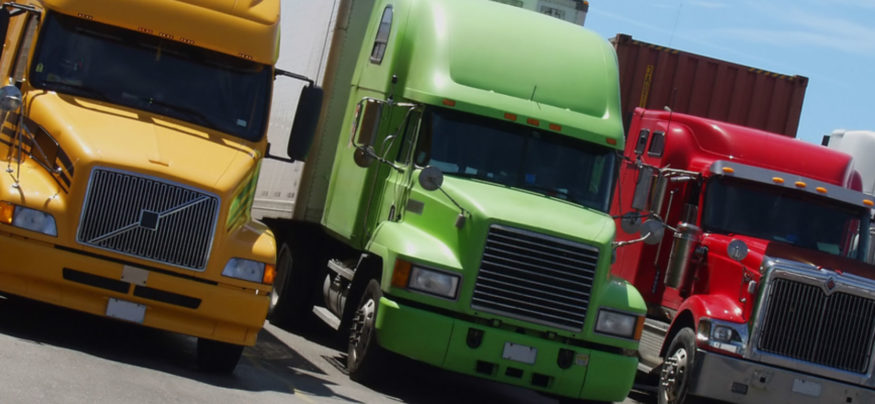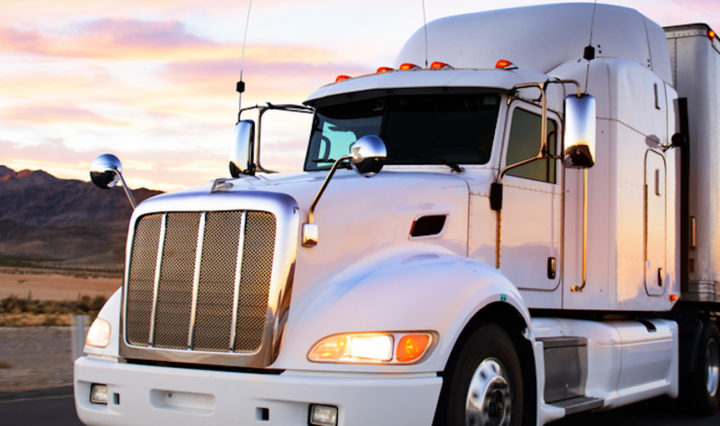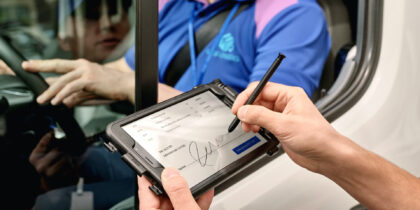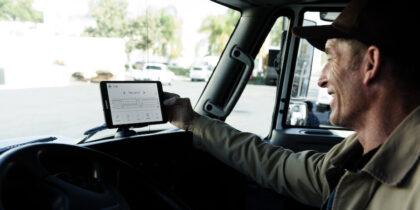While fully autonomous trucks are a few years away, telematics is helping bring truck platooning closer to reality. Trucking companies are testing the concept of platooning, which allows two or more trucks to travel close together to improve fuel economy. Onboard tech, such as radar cruise control and vehicle-to-vehicle (V2V) communication, allows the trucks to wirelessly sync their braking. The trucks are connected by a virtual tow bar that allows them to travel within a very short distance of each other, while drivers of both trucks remain at the steering wheel.
For two trucks platooning, fuel savings are an average of about 4 percent, with the second truck saving a little more than the truck in front, according to the Trucking Efficiency industry group. With fuel accounting for 30 to 40 percent of fleet operating costs, cutting costs by even a small percentage represents significant savings that could improve carrier profitability, and result in lower costs for shippers and potentially for consumers. In April 2016, the European Truck Platooning Challenge saw a dozen trucks from different manufacturers drive 2,000 kilometers in normal traffic conditions. Reported fuel savings were 7 percent overall for a three-truck platoon.
Mobility Is Changing the Transportation World
Download the eBook for a guide to everything new in fleet technology. Download Now
The Platooning Partnership at the Head of the Fleet
According to Transport Topics, fleet management solution provider Omnitracs announced a partnership with Peloton Technologies, which plans to begin filling pre-orders for its Class 8 truck platooning system this year. Peloton’s system enables two semi trucks to platoon using V2V communications and radar. Under the agreement, Omnitracs will use its telematics and fleet management solutions including dispatch, routing and navigation technology to identify and facilitate opportunities for trucks to form platoons, including trucks from different fleets. Trucks equipped with this technology will be able to find each other and form platoons based on GPS locations and route plans that show the trucks would be traveling in the same direction.
Peloton’s solution employs WABCO’s OnGuardACTIVE collision mitigation system with a 77 GHz radar sensor, and the system processes real-time data from sensors linked to other vehicle active safety and automation systems, including the emergency braking system and those from WABCO’s telematics linked to the vehicle’s systems, according to Fleet Equipment.
Peloton compared the system to a radar-based cruise control on steroids, reports TechCrunch, and the trucks will share positional and driving information through V2V communications. Each truck must be equipped with adaptive cruise control and automatic emergency braking. The cloud-based system will engage only on specified roads in safe driving conditions, and will be limited to two trucks only.
According to TechCrunch, Peloton says the lead truck in a platooning pair will see 4.5 percent fuel savings, and the following truck will return 10 percent fuel savings. The system will integrate with Omnitracs fleet management systems to help users find and route pairs of trucks for platooning, either within a fleet or with trucks from other companies.
What’s Next?
Trucking Efficiency says that industry experts predict platooning will accelerate the adoption of other, more advanced technologies such as collision avoidance and adaptive cruise control. Meanwhile, companies are developing V2V communication standards, platooning standards and cybersecurity protocols to ensure a safe, reliable system.
For now, existing telematics capabilities and fleet management solutions are serving as a foundation for the next step in connected vehicle operations that will deliver improved fuel economy, lower costs and safer highways.
Discover more technology advancements in transportation that are set to dramatically impact this rapidly changing industry.








